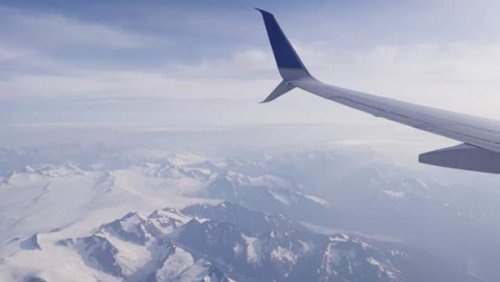Life & English: Alaska
Alaska is a special state of the United States. On the map, Alaska is very large state and completely geographically separated from the rest of the US. Alaska is located on northern Canada and near the far east of the Russian Federation.
The history of the US and Canada notes that about 12 to 14 thousand years ago, Asian people crossed the Bering Strait to explore the land of Alaska and North America now. Asian people discovered and lived in Americas from more ten thousands of years ago earlier than the moment Europeans stepped their feet in Americas.
Before 1867, Alaska was a large area of Russia. Russia had established a presence in North America during the first half of the seventeenth century, but few Russians ever settled in Alaska. In the aftermath of the Crimean War, Russian Emperor Alexander II of Russia began exploring the possibility of selling Alaska, which would be difficult to defend from Britain and other countries in any future war.
 |
| The snow moutains are the border between Alaska and Canada |
The United States purchased Alaska from the Russian Empire in 1867, for 7.2 million U.S. dollars at approximately two cents per acre ($4.74/km2), in a deal known as “Seward's Folly”. Following the end of the American Civil War, U.S. Secretary of State William Seward entered into negotiations with Russian minister Eduard de Stoeckl for the purchase of Alaska. Seward and Stoeckl agreed to a treaty on March 30, 1867. The purchase added 586,412 square miles (1,518,800 km2) of new territory to the United States for the cost of $7.2 million. Reactions to the purchase in the United States were mostly positive, as many believed possession of Alaska would serve as a base to expand American trade in Asia. Some opponents labeled the purchase as "Seward's Folly", or "Seward's Icebox", as they contended that the United States had acquired useless land. Alaska was formally transferred to the United States on October 18, 1867, through a treaty ratified by the United States Senate and signed by President Andrew Johnson. Despite purchase of Alaska was ridiculed as "Seward's Folly” and a slow start in U.S. settlement, the discovery of gold in 1898 brought a rapid influx of people to the territory, and Alaska, rich in natural resources, has contributed to American prosperity ever since. The area went through several administrative changes before becoming organized as a territory on May 11, 1912. It was admitted as the 49th state of the U.S. on January 3, 1959.
 |
| The inside of Alaska Native Heritage Center |
Now, Alaska is a U.S. state in the northwest extremity of the United States West Coast, just across the Bering Strait from Asia. The Canadian province of British Columbia and territory of Yukon border the state to the east and southeast. Its most extreme western part is Attu Island, and it has a maritime border with Russia (Chukotka Autonomous Okrug) to the west across the Bering Strait. To the north are the Chukchi and Beaufort seas—southern parts of the Arctic Ocean. The Pacific Ocean lies to the south and southwest. Alaska is the largest U.S. state by area and the seventh largest subnational division in the world. However it is the 3rd least populous of the 50 United States. Alaska population was estimated at 738,432 by the United States Census Bureau in 2015. Alaska's economy is developing by the fishing, natural gas, and oil industries, resources which it has in abundance. United States armed forces bases and tourism are also a significant part of the economy.
Quy Minh
